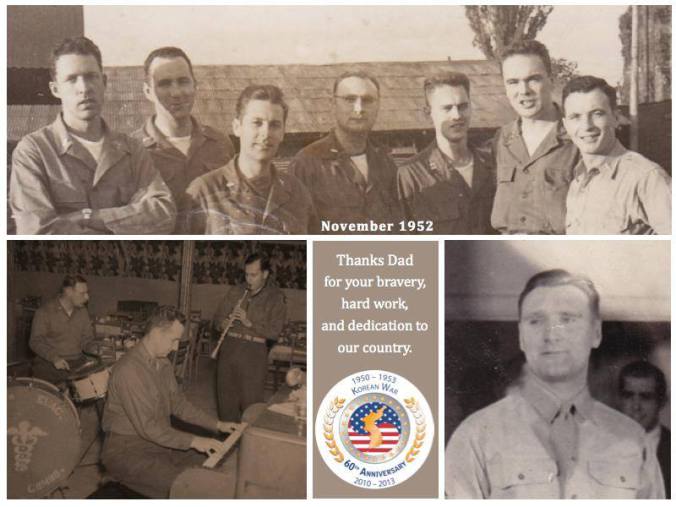I started playing the 2013 Tomb Raider reboot out of the Humble Monthly, which I dip in and out of depending on what’s offered each month. Wasn’t expecting a lot, but it’s actually really good. For example, relics are a bit more interesting than Assassin’s Creed‘s feathers, say, because you learn something about a historical artefact – coins or tools or whatever. The big thing I noticed was some interesting camera work, which we’ll discuss in more detail.
There’s a line where interfering with the camera becomes annoying and janky. Paired with an overuse of quick-time events, it becomes crushingly dull. I was afraid that this was the direction Tomb Raider was going to go in – but it doesn’t. In a post a while back, I wrote about Submerged and how it uses fixed-perspective cameras to make climbing towers a bit more interesting. Tomb Raider does a similar thing, but better. I could compare it to Submerged, but instead I’m going to focus on Assassin’s Creed – broadly, that is, rather than a specific game.
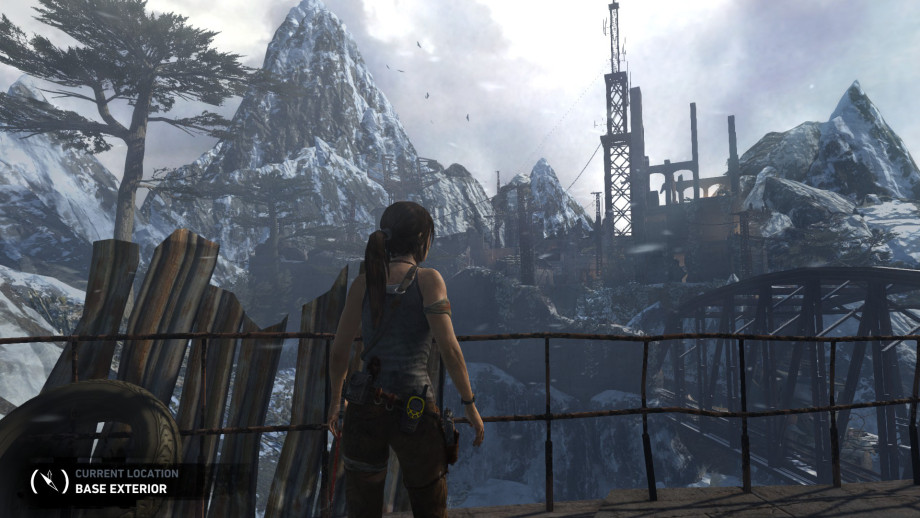
So Assassin’s Creed regularly offers you viewpoints, and you have to scuttle up a building and sync from a specific spot (they always spell it ‘synch’, and it’s stupid). I find that after a while, the climbing gets samey. Not climbing in general – just specifically for the viewpoint. One of the things I like about the climbing is that it has a bunch of different meanings in different contexts. Sometimes climbing is a way into a building. Sometimes it’s a way to hide, or to flee if someone’s chasing you. Sometimes it’s stealthy and sometimes it’s loud and it changes a bunch and that’s interesting. However, climbing for the viewpoint is something that I always find a bit monotonous. After a few years and a horde of suspiciously similar games, it stops feeling like a crafted experience. It starts to feel like they’re just plonking them down, over and over again. Enter Tomb Raider.
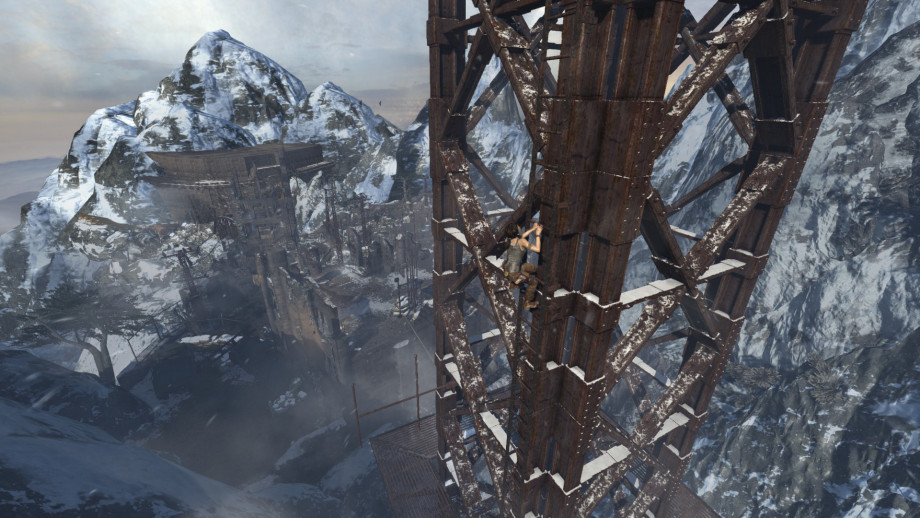
Normally Tomb Raider uses an over the shoulder perspective, as in the first photo above. When climbing the radio tower early in the game, it snaps through a few different perspectives, including the one immediately above. It all felt very cinematic – rather than just showing us Lara’s butt, it zooms out, plays around, and uses the language of film to give us a sense of the fear and danger involved in this climb. As a player, you’re not really doing anything special – you’re just pushing the up button. But visually it feels really exciting. The game uses a cutscene-gameplay hybrid to get the best of both worlds.
This hybrid method also allows us to get much closer to Lara as a character. Often protagonists in games are kinda non-events, at least in terms of characterisation. Games either employ the blank-slate approach, or there’s serious distance between how the protagonist acts in gameplay vs in cutscenes. By hybridizing the two together, we’re able to see how Lara behaves and reacts in real time (or rather game time). It brings us closer to her with the sort of proximity you expect from film.
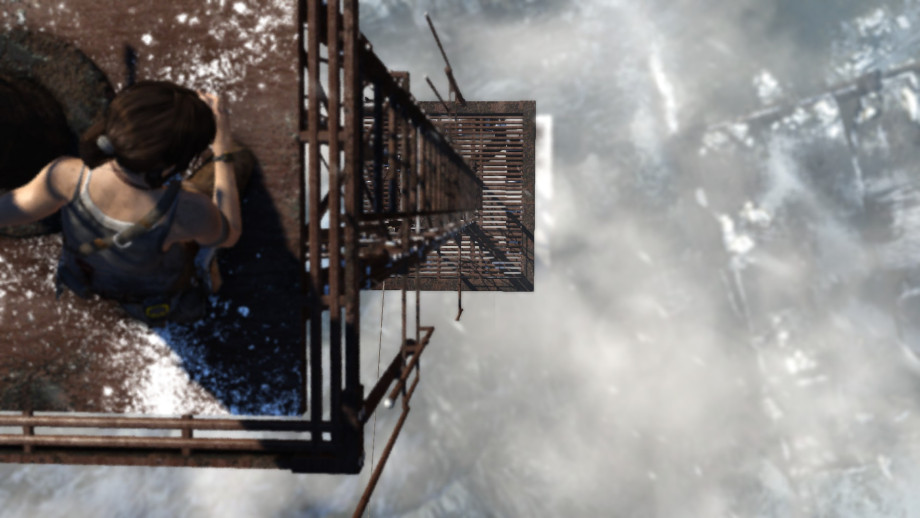
There are a few potential complaints about this method. Sometimes it’s not clear whether you’re meant to be doing anything – it’s just hard to tell whether you’re in cutscene mode or gameplay. The game often flips back and forth between them without any clear signs. However, the controls during these moments are generally simple enough that it doesn’t matter. For example, while you’re on the tower, it doesn’t matter whether you’re in cutscene mode or not. You just have to hold the up button. The only time the lack of distinction might be an issue is when the game doesn’t tell you what it wants, and punishes you anyway.
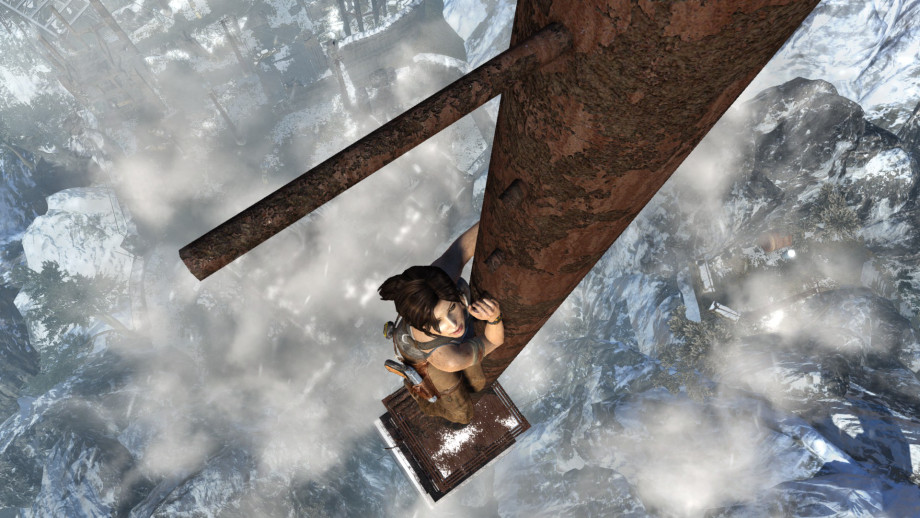
In some ways it’s unfair to compare Tomb Raider and Assassin’s Creed in these regards. Tomb Raider has one tower-climb (as far as I know), and it’s carefully and professionally crafted. Assassin’s Creed has a bunch of tower-climbs across a bunch of different games, and there’s not really anything unique about any of them. They’re very different games with very different approaches. That’s sort of my point though. It’s not that AC is bad and TR is good. They’ve got different goals – they’re apples and oranges. However, by thinking about how AC does this climbing thing, we can see more clearly why Tomb Raider does what it does. It’s a cinematic game without being intrusive – this is something that Quantum Break, in the same Humble bundle, fails at horribly. More on that another day.
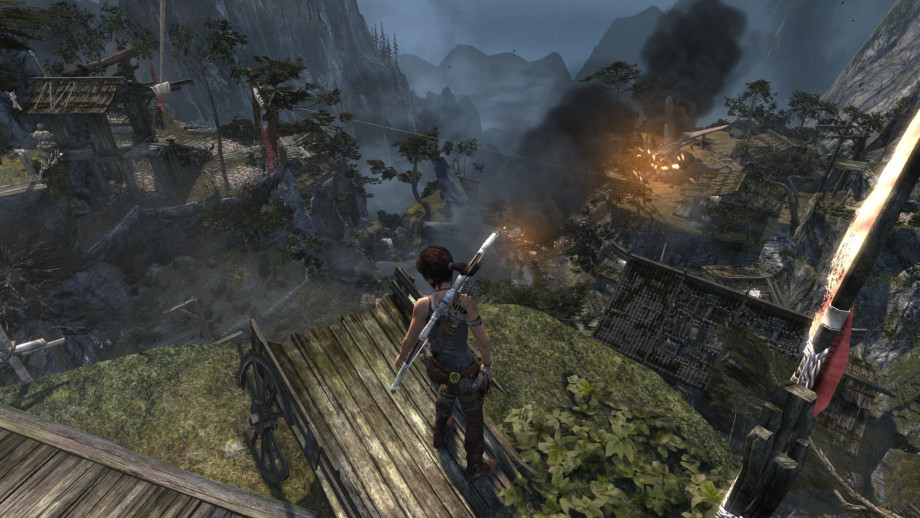
One last point. As a game that expertly merges cutscene and gameplay, it’s no surprise that Tomb Raider is excellent with vista. It’s very good at showing you an environment, and keeping you aware of where you are in the grand scheme of things. It’s the filmmaker’s eye for framing matched with the game designer’s varied environment, and fuck me it is excellent. You can see in the screencap above, there’s two big islands (left and right), and a gully running down the middle. That’s actually a stream, water rushing down the mountain. It provides a point of orientation – if you’re facing the water, and it’s moving left down the hill, you’re on the right hand side of the gully. If it’s going right, you’re on the left hand side. It’s a constant point of reference that allows you to quickly locate yourself within the environment. It’s also nice because it’s continuous – it can follow the area all the way down. It’s not like a prominent rock or something that’s only visible for the first third of the map. It’s little things like this that make Tomb Raider excellent.
Advertisements Share this:


